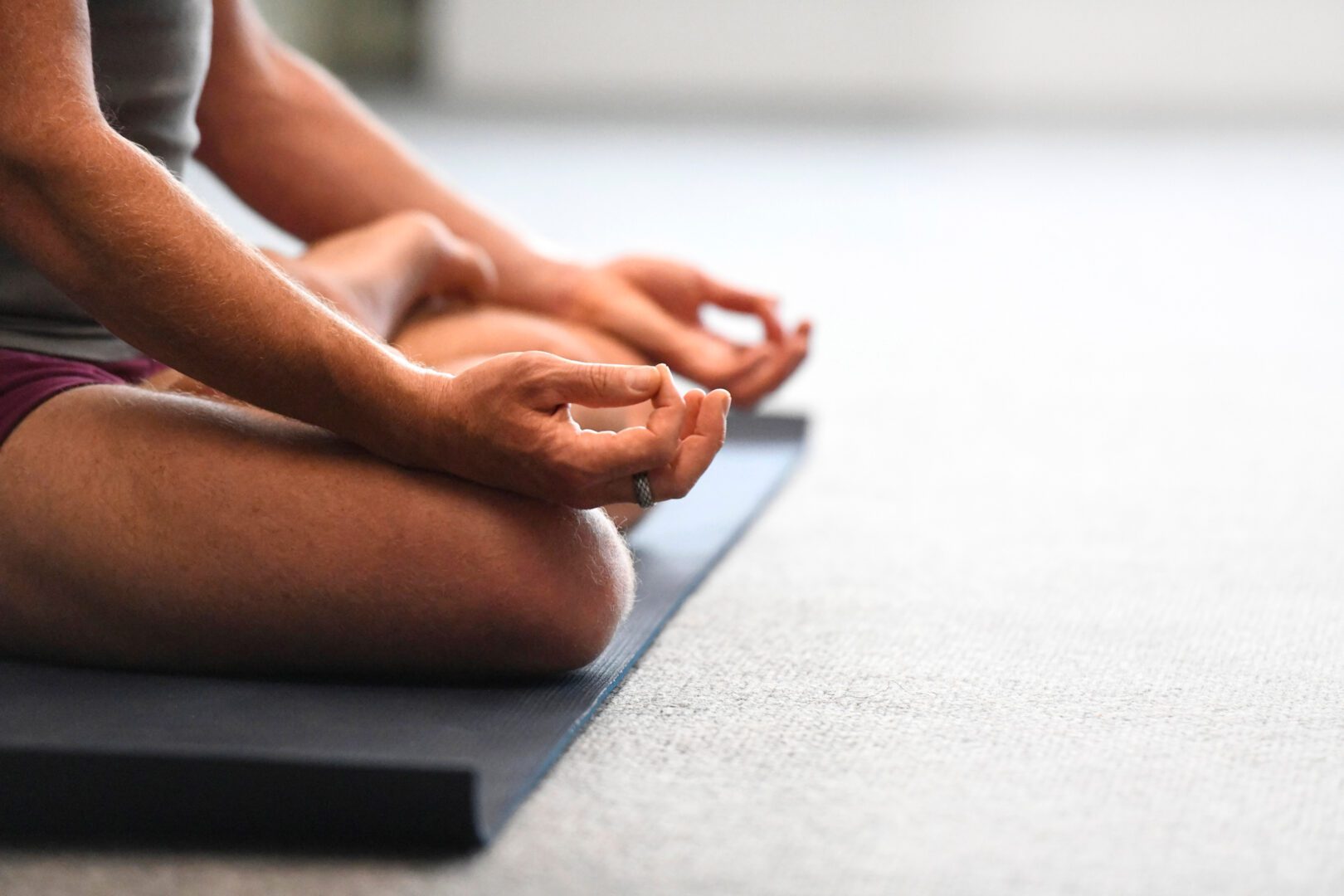
Making Yoga More Accessible to those with Hearing Impairment
As part of Deaf Awareness Week, BWT tutor Clair Yates shares her thoughts on how people living with hearing impairment and yoga teachers can work together to make classes more accessible.
Recently, I was asked how deaf people can access yoga, particularly if there’s no option of using a hearing loop. Speaking from my own experience as an accessible yoga teacher, there are three options for anyone with a disability who wants to join a group yoga class:
– Join a general group yoga class taught by an accessible yoga teacher or a yoga teacher willing to experiment with you to explore ways you can get the most from their yoga class.
– Find an established yoga class that explicitly welcomes or focuses on yoga for your particular needs.
– Gather a group of people with similar needs together, then approach a local yoga teacher, and ask them to set up a weekly class; you would then negotiate the logistics, location, timing, payment, etc., between you.
I’m based in Sidcup, Bexley, Kent, and over the years, I have been approached by different groups. For example, a group of people with Parkinson’s and a group of younger stroke survivors both asked me to set up a weekly class tailored for them.
I also teach three weekly general group yoga classes. These classes are for everybody, and I advertise them as accessible to promote the fact that everyone is welcome. Over the years, I’ve had many people participate in the classes who are deaf or hard of hearing. Before they joined the class, we had a chat to work out how they could get the most from the classes. To give you an idea, I’ll describe how that can look in practice:.
One of the class participants lost her hearing as a child. She liked to be at the front of the class, where she could see me demonstrate and lip-read. As much as possible, I made sure I was aware of facing her so she could read my lips. However, there are some situations and yoga positions where this is not possible. If she could see the people next to her, she was happy to copy them. When she couldn’t see at all, for example, in a forward bend, we agreed that I would come and lightly tap her on the shoulder to communicate that people were coming out of the pose.
Participants who lost their hearing later in life and don’t lip-read have often felt more comfortable to be situated towards the back of the room. They have communicated to me that they are happy to copy me and other class participants. If there are situations where it looks like they may not have been able to follow, I lightly tap them on the shoulder and point to someone whom they can then copy if they wish to.
I teach at a pace that allows time for visual cues, and I encourage everyone to adapt movements so they work for their bodies. This approach helps to normalise variation and difference within the group.
Sometimes deafness and hearing loss are one of several access needs — for instance, in the case of a stroke survivor. The approach is the same: we talk, we try things out, and we adapt and fine-tune together as we go.
I hope this gives you a sense of how accessibility can work in real-life classes.
Clair Yates, www.clairyates.com
About BWY
The British Wheel of Yoga (BWY) is committed to sharing yoga’s transformative power and rich heritage through events and education. Guided by yoga’s principles and traditions, BWY’s mission is to enrich lives through yoga, increasing accessibility and inclusivity. Established as a registered charity in 1965 and recognised as the National Governing Body for Yoga by Sport England and Sport Wales, BWY serves more than 5000 members and is supported by a 100-strong local volunteer network and a small central team.
For all media inquiries
Natalie Lyndon, BWY PR & Communications Officer



